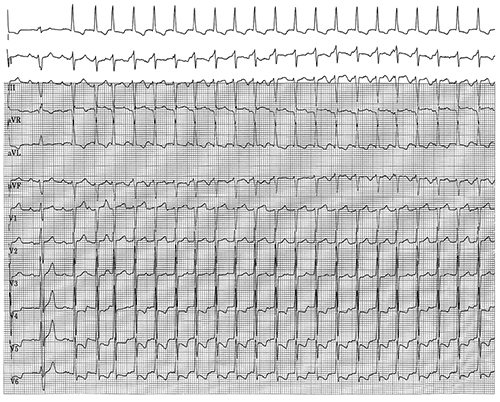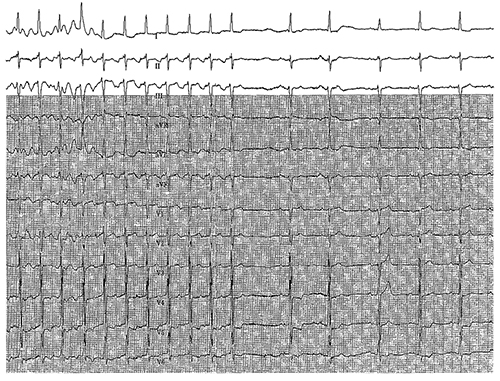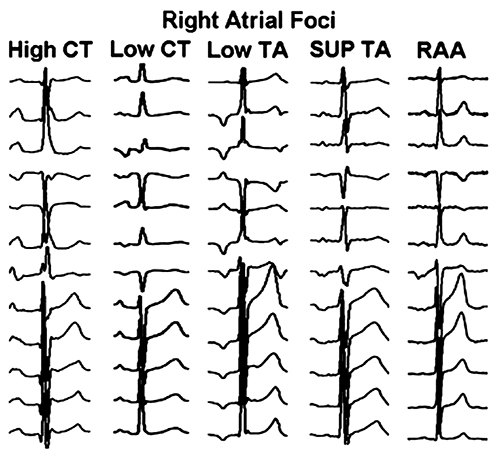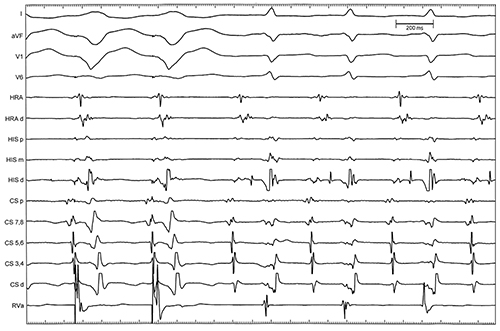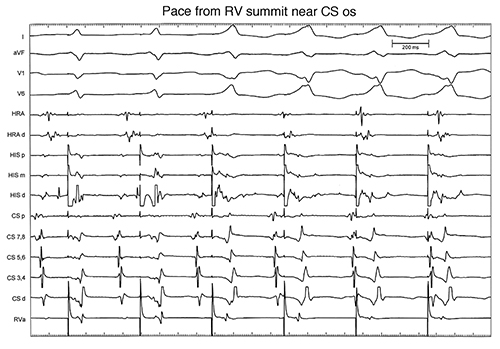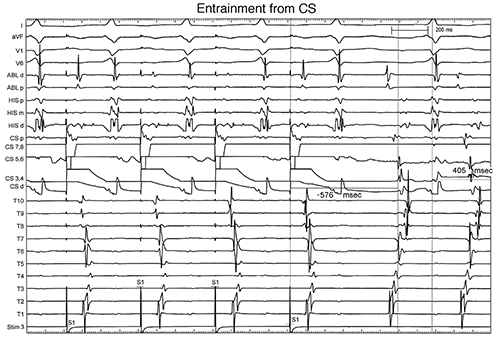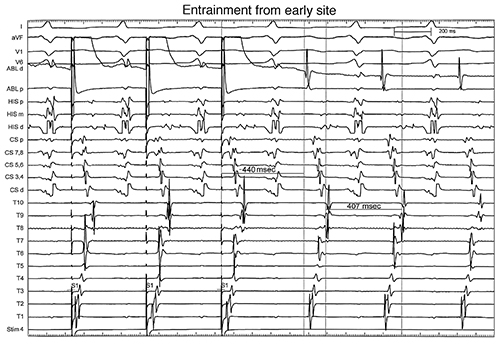ATRIAL TACHYCARDIA: DIFFERENTIAL DIAGNOSIS
Case presented by:
A 59-year-old patient presents with an almost incessant tachycardia. He has no structural cardiac disease and the cardiac echocardiogram is normal. An example of tachycardia initiation is shown in Figure 11.1.
Figure 11.1. Tachycardia.
1.What are the possible mechanisms for this tachycardia?
A.Atrioventricular nodal reentry tachycardia (AVNRT).
B.Orthodromic reentrant tachycardia.
C.Atrial tachycardia (AT).
2.What is your next therapeutic maneuver?
A.Antiarrhythmic therapy.
B.Electrophysiology (EP) study and catheter ablation.
Figure 11.2. After adenosine.
Question No. 2: The mode of adenosine termination favors:
A.Atrial tachycardia.
B.Atrioventricular nodal reentry tachycardia.
C.Atrioventricular reentry tachycardia (AVRT).
D.Automatic junctional tachycardia.
Figure 11.3. Right atrial foci. CT, crita terminalis, TA, tricuspid annulus, SUP, superior, RAA, right atrial appendage (Reproduced with permission from Teh et al.1)
P-wave contour in determining the mechanism of the tachycardia?
Figure 11.4. Ventricular pacing during tachycardia.
A.AT is excluded.
B.AVNRT is a possible mechanism.
C.AVRT is a possible mechanism.
D.The data are not conclusive.
Figure 11.5. Pace from right ventricular (RV) summit near coronary sinus (CS) ostium (os).
Question No. 4: Pacing from the right ventricle close to the region of the CS:
A.Excludes permanent junctional reciprocating tachycardia (PJRT).
B.Proves AT.
C.Excludes AVNRT.
D.Excludes junctional tachycardia.
Figure 11.6. Entrainment from the CS.
Question No. 5: Atrial overdrive pacing from the CS:
A.Proves reentry is present.
B.Excludes a focal tachycardia.
C.Suggests that this is a good site for ablation.
D.Is compatible with a focal tachycardia.
Figure 11.7. Entrainment from early site.
Stay updated, free articles. Join our Telegram channel

Full access? Get Clinical Tree


